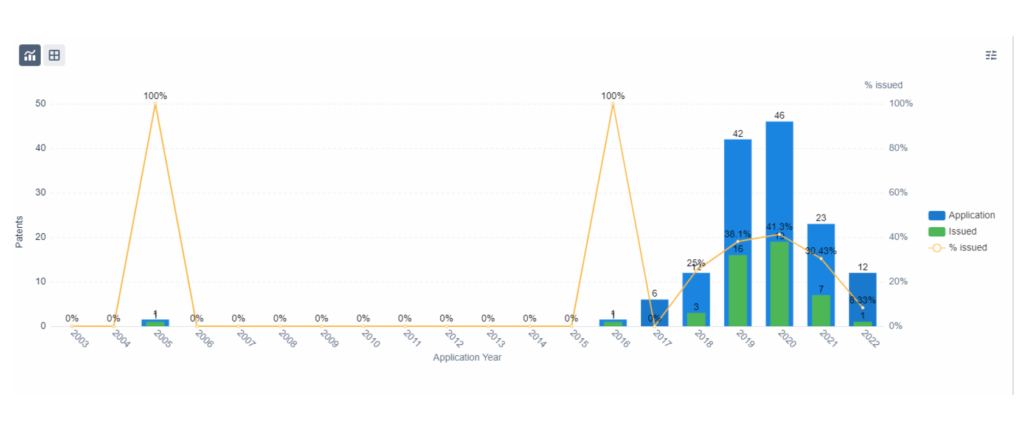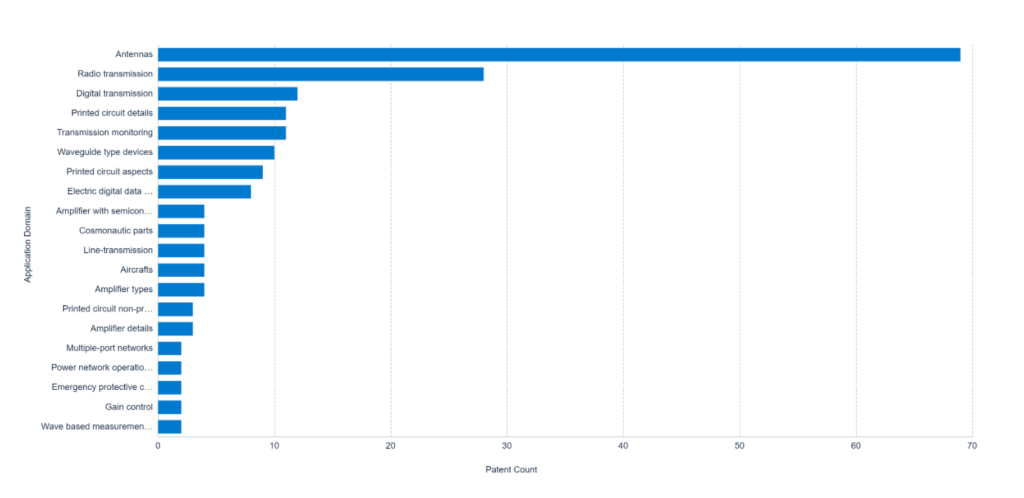Elon Musk Claims Patents Are for the Weak, His Portfolio Suggests Otherwise
If patents are “for the weak” as Elon Musk claims, then why is he patenting his inventions? In this article, we’ll take an in-depth look at Musk’s IP strategy and patent portfolios.
A self-made billionaire. One of the real-life inspirations for Iron Man’s Tony Stark. The world’s richest man (worth a neat $250 billion). And Twitter’s newest CEO.
Who might this be? Elon Musk, of course.

As a serial entrepreneur, risk-taker, and social media personality, Musk is no stranger to making headlines for his business ventures and polarizing online persona. In 2014, he took a stance against patents, claiming not to care about them. More recently, on a SpaceX facility tour with CNBC and Jay Leno, Musk said “[I don’t] really patent things” and “patents are for the weak.”
But are these statements just hot takes or is Musk expressing how he truly feels?
In this article, we’ll take an in-depth look at Elon Musk’s patent portfolios — in particular, Tesla and SpaceX — and let you be the judge. You’ll walk away knowing whether he’s actually a patent hater, or if it’s all talk.
Elon Musk’s Patent Portfolio: An Overview

Tesla is one of six companies in the United States valued at over $1 trillion. It’s worth more than its nine largest competitors, combined. With more than 100,000 employees Tesla is also one of the world’s largest companies, and one of Musk’s biggest ventures.
Specializing in electric vehicles (EV) and batteries, Tesla beat most of the other major car manufacturers to the EV market. The company now has 17 gigantic facilities in the US, China, Canada, Germany, and the Netherlands, and sells around one million vehicles a year. To top it off, Tesla owns SolarCity, the US’ leading solar panel provider.
Worth a whopping $127 billion, SpaceX is an aerospace company that Musk founded in 2002. It’s the second most valuable private company in the world, behind TikTok. Musk is the “lead designer” at SpaceX, where he oversees the development of spacecrafts and rockets, for missions to Earth’s orbit and eventually other planets.
Like any disruptive company, SpaceX has had its share of ups and downs over the past 20 years, including rocket failures to starship explosions. However, it also became the first private company to send a craft to the international space station and send astronauts into orbit. In addition, the company also developed and launched Starlink, a constellation of satellites intended to offer internet service around the globe.
Neuralink is a neurological research company, founded in 2016. Combining science fiction with anatomy, the company’s goal is to treat and help people with paralysis and other serious neurological disorders, as well as link artificial intelligence with the human mind in the form of a brain-computer interface.
Beyond cortical and limbic systems, Musk believes Neuralink can also add a third layer of digital superintelligence to humans, thereby allowing humanity to avoid potential “AI enslavement.” Musk is known to be wary of AI, theorizing that intelligent machines could become exponentially smarter than humans. Therefore, by connecting our brains to the digital world, humans can gain access to the same computing power and intelligence as machines, birthing equivalent capabilities and reducing potential risks.
A subsidiary of SpaceX, The Boring Company’s mission is to help displace city traffic by using underground tunnels. The company first experimented with “tunneling” under the SpaceX factory in California, and it became an independent entity in 2018. In the future, the company hopes to create a “hyperloop system” to enable passengers to travel at 700 miles per hour.
In his most recent bid to transform the world and “free the bird,” Musk purchased Twitter for a cool $44 billion. Although his long-term plans are still unfolding, one thing is certain: Twitter’s business structure is getting a massive makeover. Its workforce was cut in half recently, and Musk is in the process of developing a paid subscription model to increase revenue.
Patent Hater or Fan?

When it comes to running a successful business, Musk seems to have the Midas touch. And given his alleged disbelief in patents, this has us wondering: What is his IP protection strategy?
Analyzing his two largest companies, we see that parents are, in fact, a massive part of his business strategy.
Tesla’s Growing Patent Portfolio
Despite Musk’s claims that he doesn’t patent, Tesla’s portfolio tells another story. The company has more than 2,900 active patents and around 3,900 total patents. Musk himself is attributed as the inventor on several of the patents!
Tesla’s sheer number of patents leaves its rivals in the dust. The company’s patent portfolio is valued at nearly $4 billion, with 29 patents valued at over $3 million. Compared to the industry averages for the various patented technologies, most of Tesla’s patents are worth four times the industry average.

The technology protected by Tesla patents is largely related to electric vehicles, renewable energy generation (due to Tesla’s acquisition of SolarCity in 2016), and various battery components.

The Tesla Patent Pledge
When Musk announced that he was opening Tesla’s patent portfolio to anyone, it was difficult to comprehend such a bold move, especially in the automotive industry which is highly competitive. Initially, Tesla’s executive team felt it was necessary to file patents to protect the company’s IP and ensure big car companies wouldn’t copy Tesla’s technology. But, upon further analysis, Tesla’s team concluded that since EV sales only account for one percent of total vehicle sales, open innovation in the EV sector is crucial if Tesla is going to survive.
As a result, Musk pledged to make Tesla’s patents accessible to the public. He said, “Tesla will not initiate patent lawsuits against anyone who, in good faith, wants to use our technology.”
Although Musk’s statement makes it seem like all of Tesla’s patented technologies are available under its open philosophy, this isn’t the case. Tesla won’t initiate a lawsuit against any party for infringing its patents related to EVs only, but it doesn’t mention anything about the other patented technologies.
Additionally, the pledge itself is not a waiver of any patent claims, nor is it a license. Instead, the policy applies to a list of 361 patents which translates to about 161 patent families, or about 14% of Tesla’s total patent portfolio. The publications included in this list all have priority dates prior to 2016. This means that the company isn’t actively updating its available assets since announcing this policy, despite continuing to innovate and patent in this space (as the graphs below illustrate).


Tesla’s active portfolio consists of 764 patent families, and 626 of these are excluded from the pledge. This means, in theory, these patents can be used in assertion or monetization cases. However, the patents that are included in the pledge are older and may be more valuable, meaning they provide the key insight and technologies needed to develop EVs. Most of the patents covered in the patent pledge are related to electrical power systems (118 patent families), which are technologies that broadly relate to electric vehicles.
Since enacting its pledge, Tesla has remained true to its word that it wouldn’t enact litigation. However, that doesn’t mean the company won’t — or can’t — in the future. The fact that Tesla’s statement is framed as “our patents are your patents” but the fine print says otherwise, leaves many people wondering if this is just a PR stunt.
SpaceX: A Patent-Free Company?
In a 2017 interview, Musk said “We have essentially no patents in SpaceX.” In 2022, he again reiterated this claim, saying, “We don’t really patent. Our primary long-term competition is China. If we published patents, it would be farcical, because the Chinese would just use them as a recipe book.”
Although SpaceX prefers trade secrets for its core technology for this very reason, this doesn’t mean the company forgoes patents altogether. Currently, SpaceX’s patent portfolio consists of 143 patent applications, with a valuation of $1.2 million. Eighty-one of these applications have been filed since 2020, and based on current trends, it appears this number will continue to increase.

SpaceX patent application trends since its founding in 2002; 2021 and 2022 patent numbers are expected to increase, given the 18-month delay in patent application processing.
Knowing SpaceX tends not to patent its core technologies, what types of inventions is the company protecting with its patents? The majority of the company’s patents are related to the Starlink Project. Specifically, the applications focus on antennas, radio transmitters, and digital transmission (illustrated below).

Interestingly, trade secrets offer greater protection than patents. This is because trade secrets are protected (in the US) under the Economic Espionage Act of 1996. Anyone found guilty of leaking trade secrets can face serious jail time and hefty fines. When implemented properly, trade secrets are the ultimate intellectual property blocking tool.
This is in sharp contrast to Musk’s statement claiming, “patents are for the weak,” and “used like landmines in warfare.” Musk went on to say that patents “don’t advance things; they just stop others from following you.”
But, if Musk truly believed his own statements, why would his top companies continue to patent? And if his goal was to help others progress via open innovation, why would he employ one of the most secretive strategies for protecting his companies’ IP?
Closing Thoughts
According to a study by Ocean Tomo, 90% of the asset value of companies in the S&P 500 in 2020 was “intangible,” this includes intellectual property, goodwill, brand value, algorithms, and other things you cannot physically hold. In many cases patents are where your value as a company lies, so time spent investing in a robust patent strategy from the beginning will increase your odds of seeing a return on the investment later.
Although Musk is quick to dismiss the value of patents, his portfolio tells another story. He actively protects his IP, regardless of what claims he makes to the contrary.
Our advice? Follow what Elon does, not what he says.